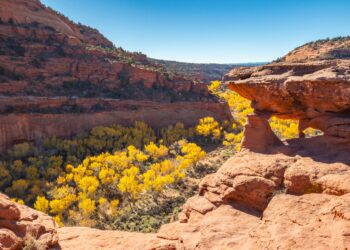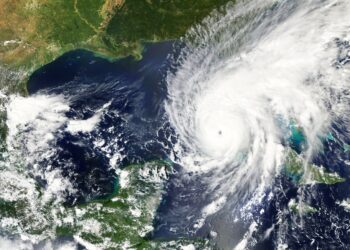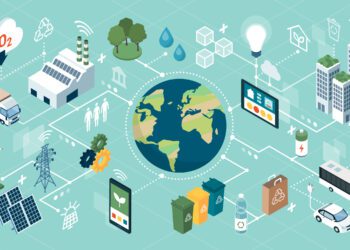As climate-related risks and opportunities grow in prominence, organizations should consider undertaking climate-related scenario analysis
According to the recent EY investor survey Does your nonfinancial reporting tell your value creation story?, 47% of investors would reconsider investment based on climate risks
To respond, businesses should be better informed of potential climate-related financial risks, and how they can best be managed and communicated.
This is a message reflected in the Task Force on Climate-related Financial Disclosures (TCFD) recommendations, which urge organizations to take account of climate-related issues and disclose the financial impact that climate-related risks have, or could have, on their business.
However, while the topic of climate-related risks is becoming more prominent, many organizations do not have a clear understanding of the range and magnitude of potential financial impacts resulting from climate change in the short and long term. This is because climate-related risks are inherently more complex and long term in nature than most traditional business risks, contributing to a lack of clear understanding and measurement capabilities to assess the potential impacts on an organization’s operations and performance.
To solicit decision-useful, forward-looking information on the financial impact of climate-related risks and opportunities, organizations should be conducting climate-related scenario analysis.
This article examines the steps required for scenario analysis and modeling, and how to manage exposure to climate risks.
So, what is scenario analysis and how can it be applied to climate-related risks?
The scenario analysis approach – in the context of climate change – allows organizations to explore some of the impacts of different climate futures on sectors of the economy, the scale of change and (model dependent) the timing of change. Climate scenarios do not predict the future. Their purpose is to offer alternative views of future climate trajectories that:
- Deal with outcomes that are highly uncertain, medium to long term, with the potential for complex and substantial disruptive effects
- Enhance organizations’ strategic conversations about the future by considering scenarios where climate-related impacts can be significant
- Assist organizations to frame and assess the potential range of plausible business, strategic and financial impacts from climate change and government policies and regulations
- Assist investors in understanding the robustness of organizations’ strategies and financial plans, and in comparing risks and opportunities
The applications for scenario analysis are broad. They can be used to:
- Evaluate the potential resiliency of the strategic plans of a business to the range of scenarios
- Assist in identifying options for responding to the organization’s strategic and operational risks
- Provide insights to possible opportunities that could be identified through adjustment to strategic and financial plans
- Support disclosures required to respond to stakeholder demands
Knowing where to start in building scenarios can be daunting. However, there are some external guidance and frameworks that can help organizations apply scenario analysis to climate-related risks, including:
- TCFD’s Technical Supplement, The Use of Scenario Analysis in Disclosure of Climate-Related Risk and Opportunities
- Publicly available climate-related scenarios from the Intergovernmental Panel on Climate Change (IPCC) and International Energy Agency (IEA), which can be tailored by organizations to fit their own particular circumstances
Understanding the risks and opportunities from climate change
Before performing scenario analysis, organizations should understand their climate change transition, and physical impact risks and opportunities as per the TCFD recommendations.
Definition
Climate-related opportunity. Efforts to mitigate and adapt to climate change will likely result in new opportunities, such as through resource efficiency and cost savings, the adoption and utilization of low-emission energy sources, the development of new products and services, and building resilience along the supply chain. Climate-related opportunities will vary depending on the region, market and industry in which an organization operates.
Climate-related risk. Physical risks emanating from climate change can be event-driven (acute), such as increased severity of extreme weather events (e.g., cyclones, droughts, floods and fires). They can also relate to longer-term shifts (chronic) in precipitation and temperature, and increased variability in weather patterns (e.g., sea level rise). Climate-related risks can also be associated with the transition to a lower-carbon global economy, the most common of which relates to policy and legal actions, technology changes, market responses and reputational considerations.
Using these definitions to identify potential climate-related risks and opportunities, organizations can start planning for their scenario analysis. They also help explore alternatives that may significantly alter the basis for “business-as-usual” assumptions and identify opportunities through innovation.
Key considerations
There is no “one solution fits all,” and organizations will have to look at their own circumstances and value chain when undertaking this analysis. Not only are the Intergovernmental Panel on Climate Change (IPCC) and International Energy Agency (IEA) providing different possible scenarios when it comes to global warming (i.e., changes of 1.5 oC, 2 oC, 3 oC or 4oC), the actual impacts of these possible scenarios may be very different in different parts of the world, and on different time scales. In different regions, climate change could be felt as more extreme temperatures, rise in sea levels or more hurricanes, rather than as a slow and steady increase in the temperature across months.
While scenario-analysis is not new, applying it to climate change is relatively recent, and there is much to be learned and understood. In addition, as more organizations start applying climate risk-related analyses, particularly in response to the TCFD recommendations, an increasing number of challenges are arising, such as:
- Which scenarios an organization should explore
- How climate change should be addressed from a business strategy perspective
- The physical, economic and regulatory connection between climate change and business and supply chain activities
- Consistent methods and assumptions used to support the scenario analysis
- Rigor and sophistication in the use of data set inputs
Over time, and as data needed to create more refined scenario analysis becomes available, organizations should be able to improve the key inputs, outputs, assumptions and analytical methods. But this shouldn’t stop organizations from starting now to understand the risks and opportunities associated with climate change, and applying scenario analysis and modeling.
Organizations should remember that this is a journey and not all analyses and risk assessments need to have a concrete quantitative outcome; they can be qualitative as a start.
Courtesy EY. Click here for full report












